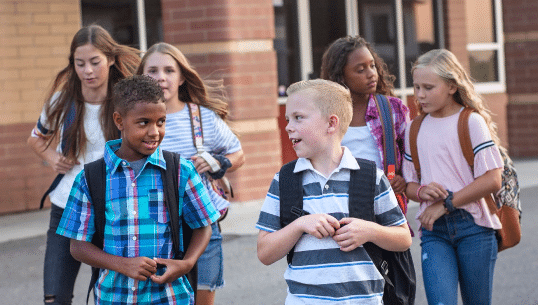
In the first week of my teaching career, I had a colleague say to me, “You get only one chance to start the year off in a good place – if it starts off wrong, it will stay wrong.” As a new teacher, this statement really impacted me. I was blessed to watch my colleagues come together to ensure that the year would begin on a positive, strong note for both the faculty and the students. We had an amazing year.
The beginning of school last year was unlike any year any teacher faced. Some schools were completely remote. Others were in person with social distancing measures in place. Still others were using a hybrid model. The decision on which model to follow was rarely in the hands of teachers, but teachers were expected to make sure that students and schools were successful regardless of the model chosen.
My career has taken me many different places where I have been privileged to work with and around some of the most amazing teachers, administrators, and faculty. Recently, I ran into a former colleague who shared with me how successful she felt the previous school year was, even with all that had to be dealt with. I asked her how she and her colleagues were able to make it work so well. Her statement, while short, was incredibly impactful. She said, “It was simple: we all worked together to make it happen.” Now, I have absolutely no doubt that it was anything but simple. But when she shared with me how they kicked off the year, I could understand why she would use the word “simple” to describe it. She and her colleagues made it seem simple because they worked together. Here is how they did it.
During the in-service days prior to the beginning of the year, the administration allowed ample time for professional learning community (PLC) teams to meet. Each PLC team was charged with creating goals for the school year. Then, as a group, the school decided on what goals to adopt. One of these goals was to ensure that students, when they returned to school, would feel safe and secure, and know that they belonged there.
Next, teachers were tasked with developing various ways that this goal could be achieved. Working together, they decided to give students the “red carpet treatment” as they entered the school on the first day of classes. Teachers would excitedly greet students and welcome them to the new school year. Once inside, students would have their beginning-of-the-year picture taken in front of a dramatic backdrop. Then, they would be escorted personally to their homeroom.
Along with giving students the “red carpet treatment,” teachers agreed upon various beginning-of-the-year activities to build classroom communities and create excitement among the students. To ensure that these activities would work appropriately, the teachers practiced them together before the students arrived.
Finally, teachers met at the end of each day in their PLC teams to check on how students, teachers, and staff were doing. If someone noticed students were uncomfortable or disengaged, everyone brainstormed ideas to help. If someone reported that they were struggling, then the group would determine a plan to help that teacher or staff member. The school was determined to ensure that no student, teacher, or staff member felt alone.
This story of success may seem simple, as my former colleague described it, but it is rather complex in its execution. These dedicated teachers and staff collaborated with one another to ensure that the year began on a high note. And, just as my colleague said to me during my first week of teaching, the year was good because the beginning was good.
Dr. Joe Tilley is a Responsive Classroom Curriculum and Instructional Designer.